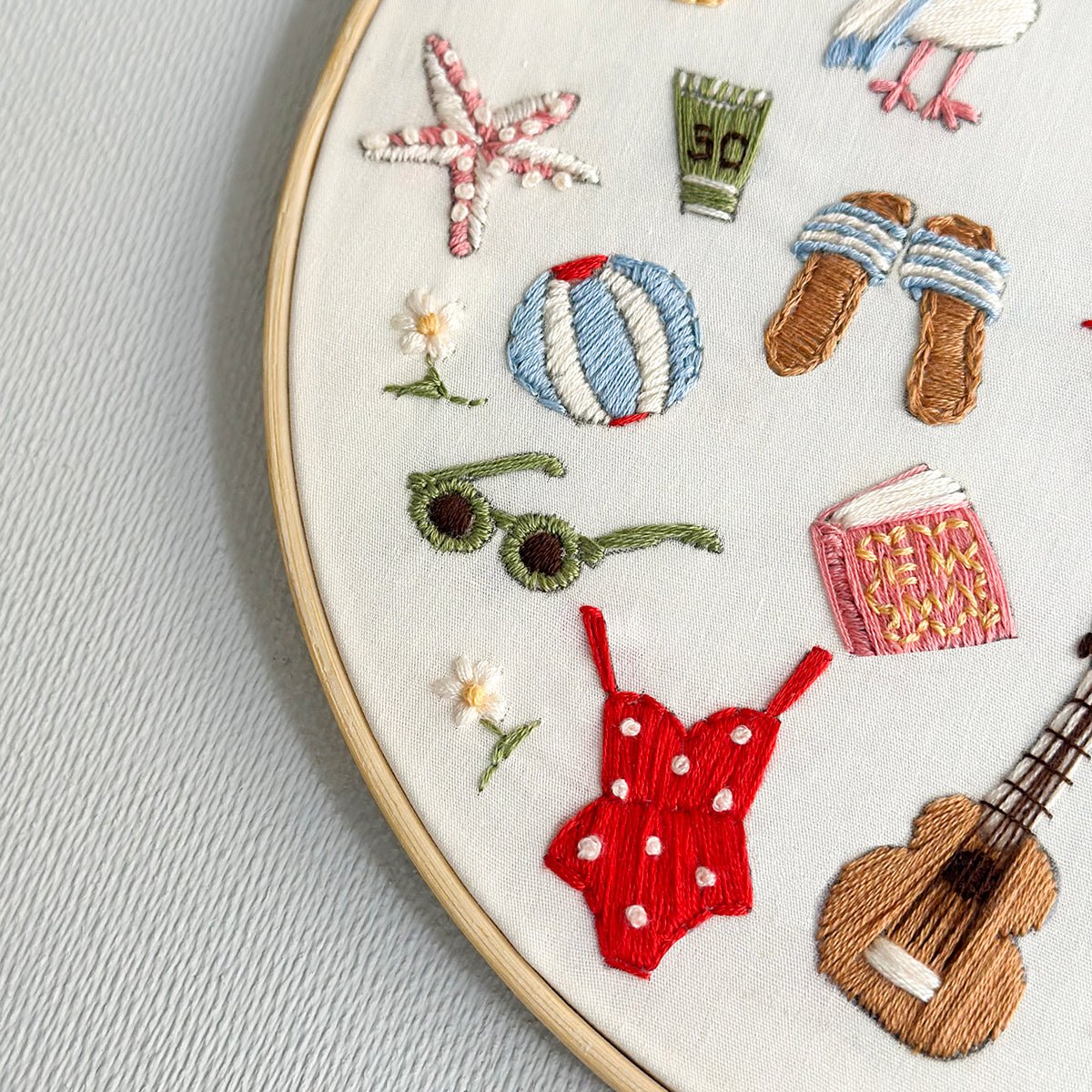Embroidery stitches are the foundation of any embroidered piece, transforming simple fabric into intricate, stunning designs. Whether you’re a beginner looking to learn a few basics or a seasoned stitcher hoping to expand your skills, understanding various stitches will open endless creative possibilities. From traditional stitches used in heritage needlework to modern and innovative styles, mastering embroidery stitches allows for incredible customization. Let's dive into some essential stitches and creative techniques to elevate your embroidery projects.
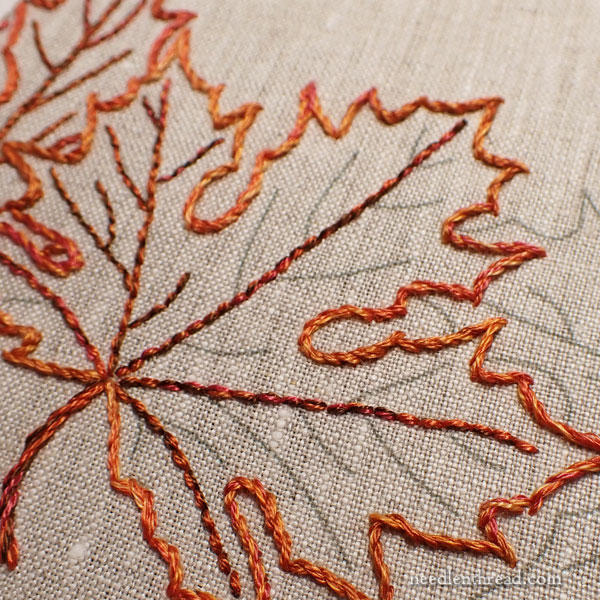
1. Running Stitch: A running stitch is one of the simplest and quickest embroidery stitches to learn, making it perfect for beginners. It's created by passing the needle in and out of the fabric in an even rhythm, forming a dashed line. While it may look simple, this stitch can be used for outlining, creating borders, and even filling spaces when used in rows or patterns. The versatility of this stitch allows you to experiment with spacing for different effects, from delicate lines to bold textures.
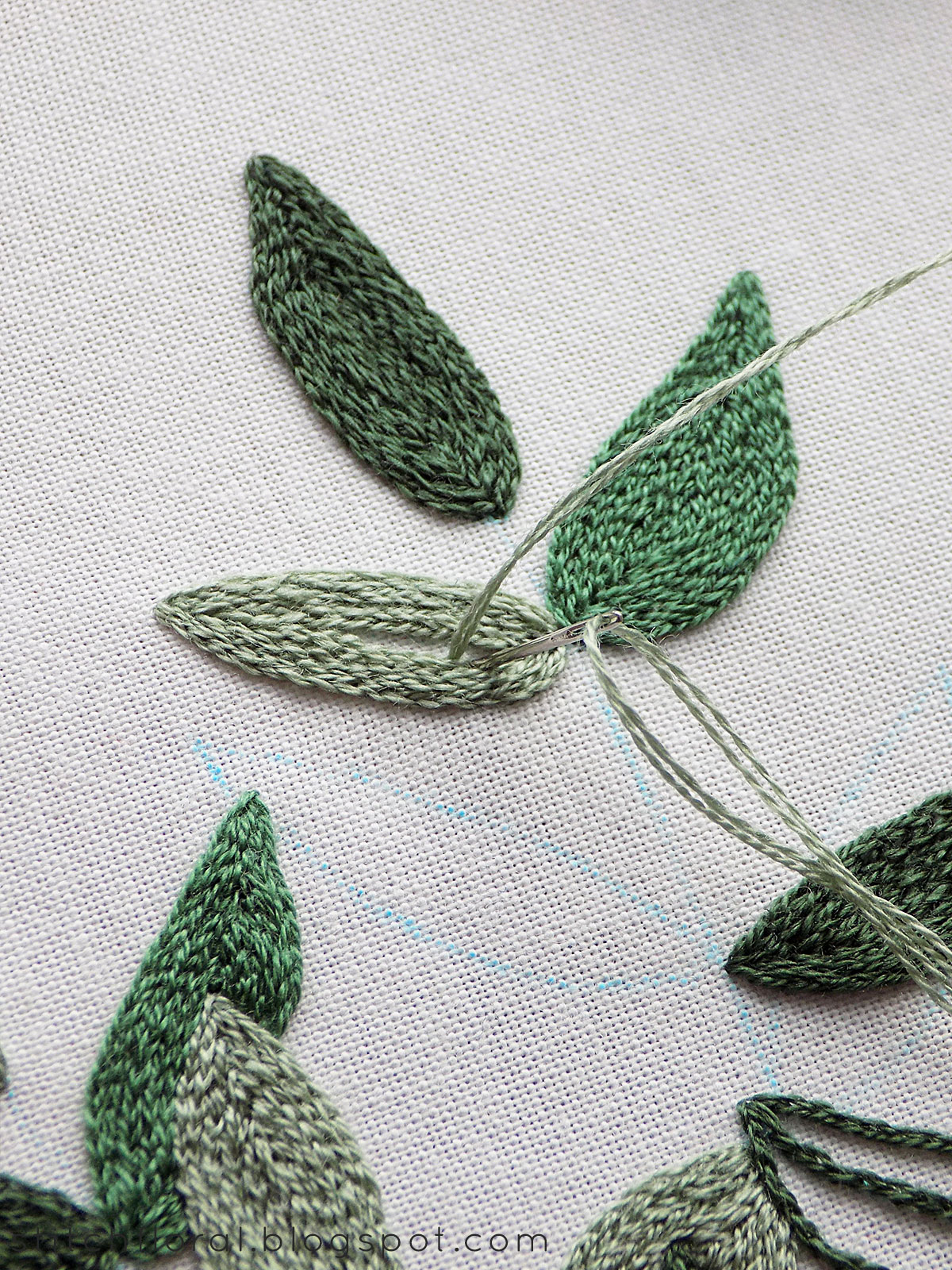
2. Backstitch: The backstitch is a popular stitch used to create clean, continuous lines. To create it, bring the needle up through the fabric, then go back down one stitch length behind the starting point, and come up again one stitch length ahead. This technique is excellent for lettering, outlining shapes, or creating borders. Backstitch is a foundational stitch, often the first one learned for building more complex designs. It’s strong and precise, making it ideal for projects where detail matters.
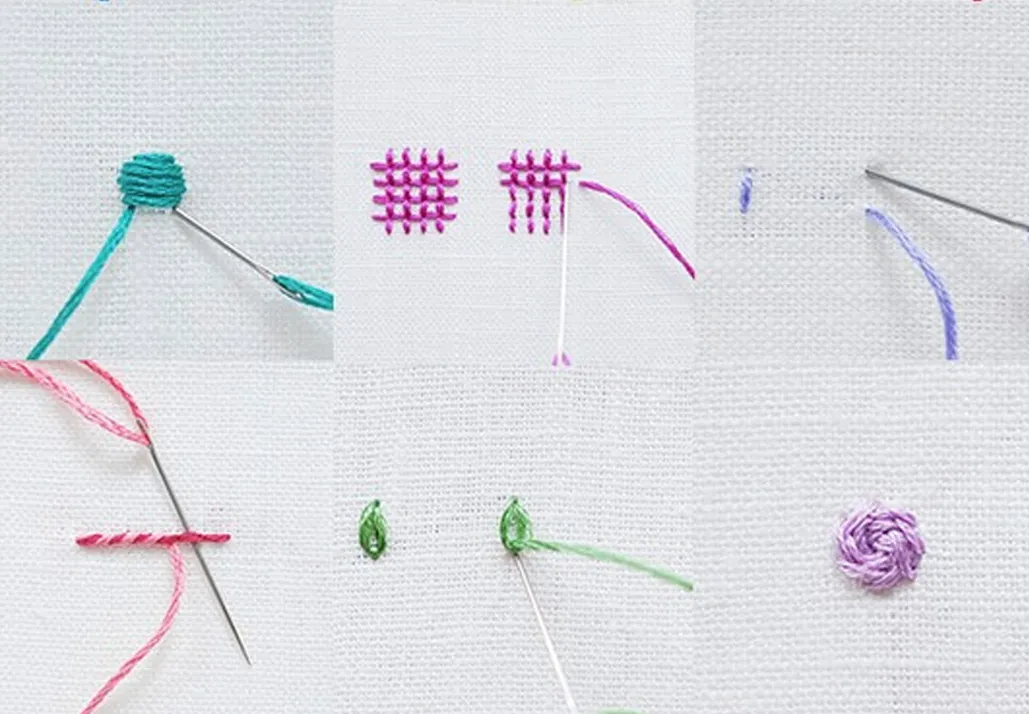
3. Satin Stitch: The satin stitch is a filling stitch that provides a smooth, solid coverage, perfect for filling in shapes or adding bold color blocks. By stitching side-by-side rows closely, satin stitch fills areas with a satin-like sheen. While it requires a bit of practice to achieve an even surface, the results are worth the effort. This stitch adds texture and dimension, ideal for elements like flowers, leaves, or abstract shapes in any design.
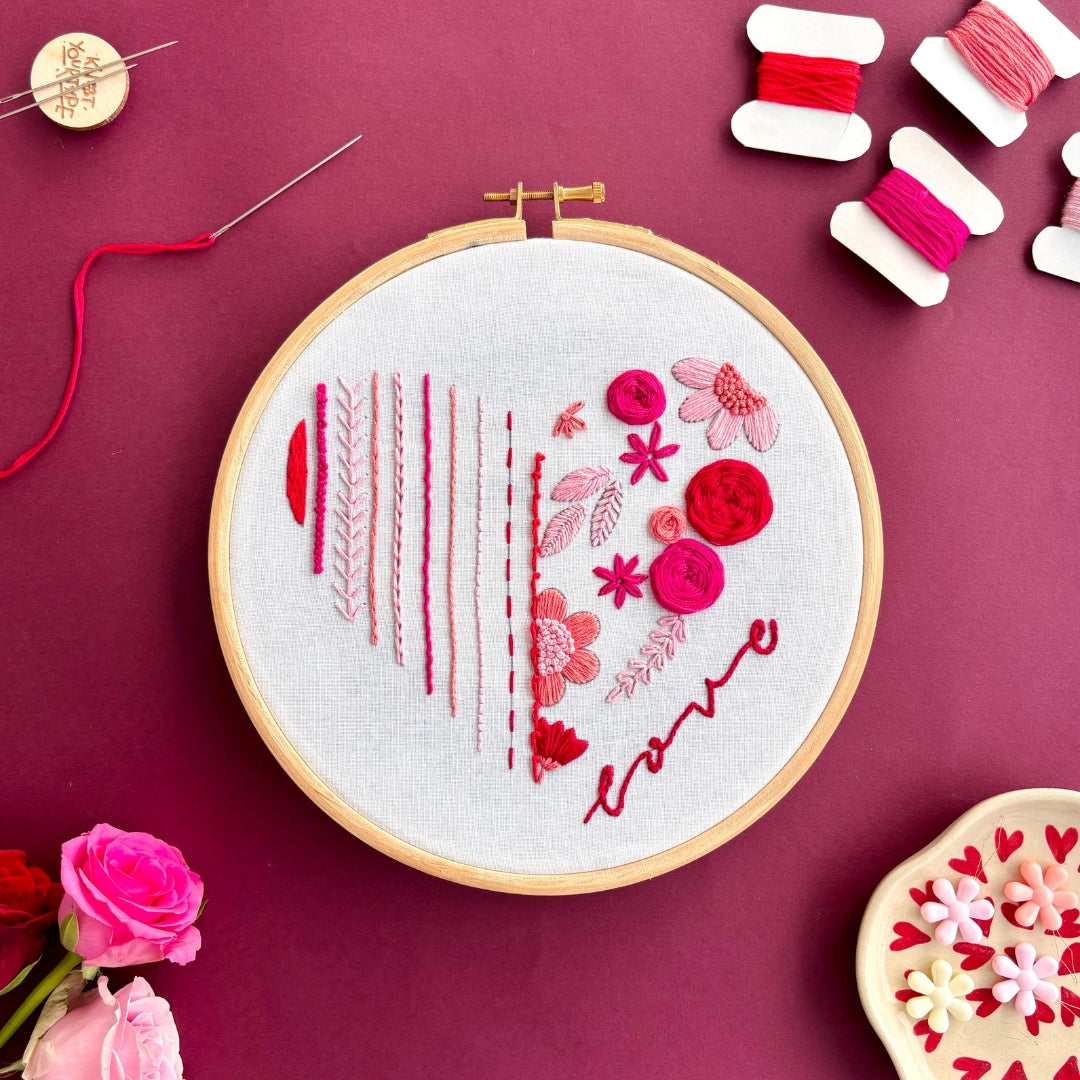
4. French Knot: French knots add beautiful, raised dots to embroidery, bringing a touch of elegance and texture. To make a French knot, wrap the thread around the needle a couple of times before pushing it back down close to where it emerged. It’s a versatile stitch, often used to create floral centers, textured backgrounds, or add fine details. Beginners may find it tricky at first, but with practice, it becomes easier to control the knot size and placement.
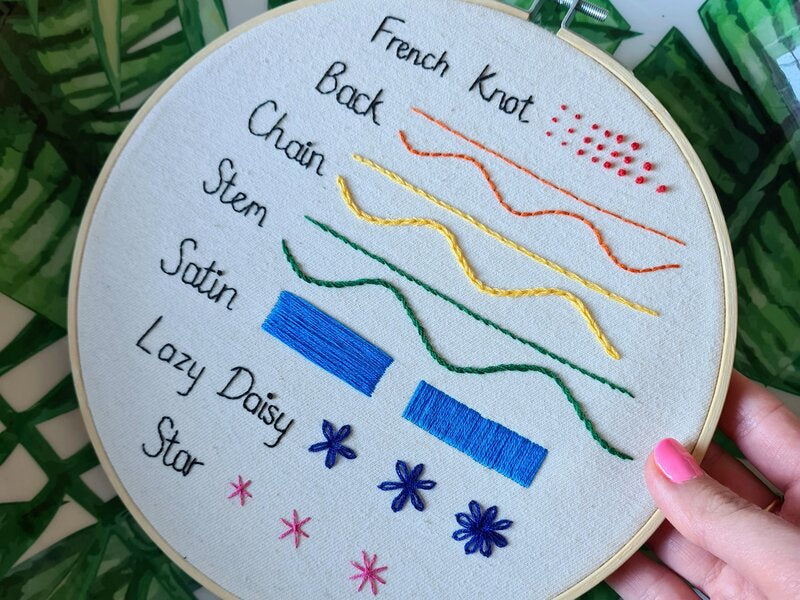
5. Chain Stitch: The chain stitch forms a linked chain-like effect that works well for outlining and adding interesting borders to designs. To make this stitch, bring the needle up, make a loop, and then bring the needle back down within the loop to secure it, continuing to the next stitch. Chain stitches can be used individually as decorative elements or in long chains to outline shapes and patterns, offering a charmingly rustic or vintage feel to designs.
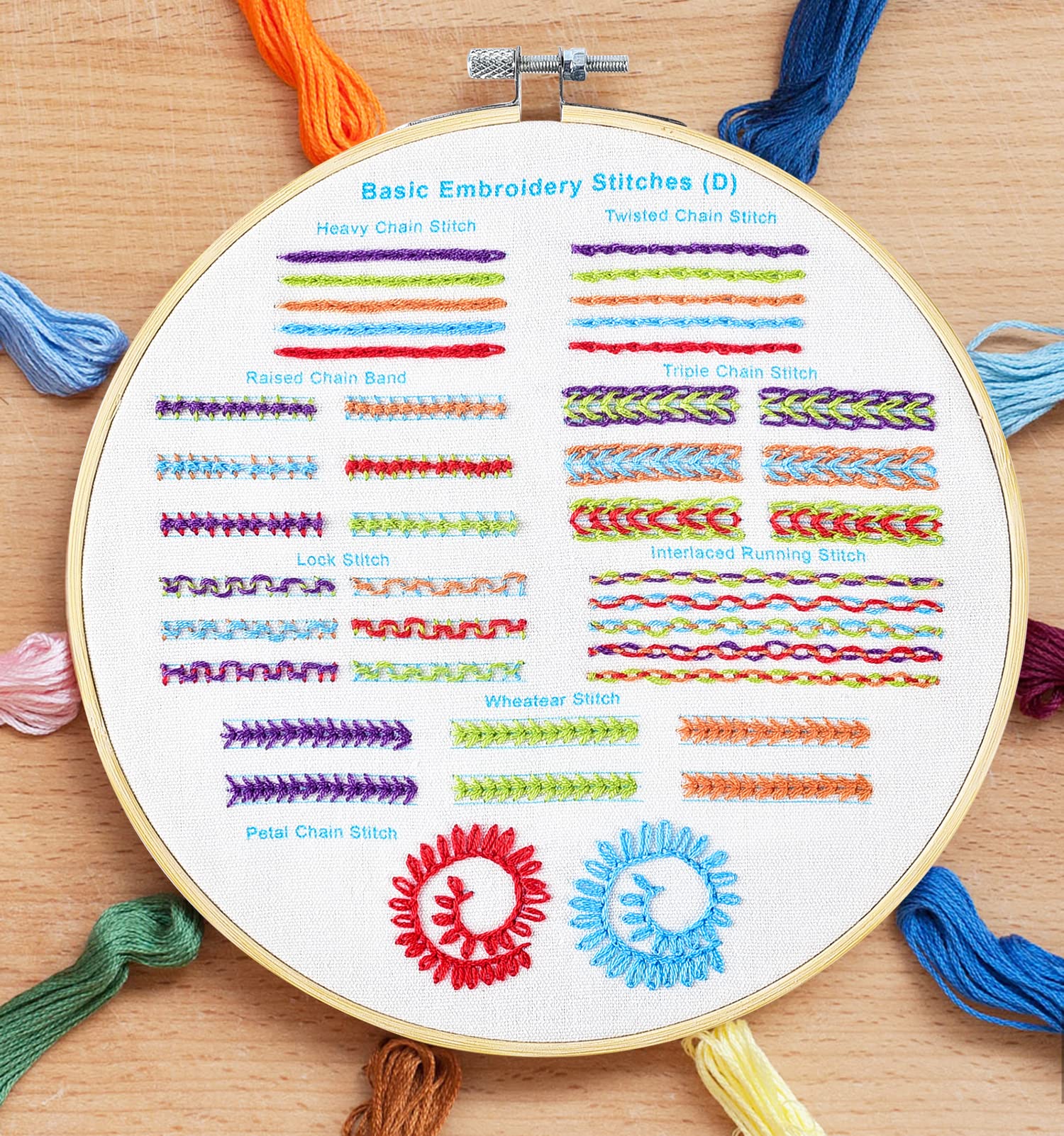
6. Lazy Daisy Stitch: The lazy daisy stitch, or detached chain stitch, is perfect for creating petal and leaf shapes. To start, bring the needle up and down in the same spot to form a loop, then secure the loop with a tiny stitch at its end. Repeat this to form flower petals, leaves, or abstract designs. It's a fun stitch that adds charm and a bit of whimsy to any embroidered piece, whether for floral motifs or playful accents.
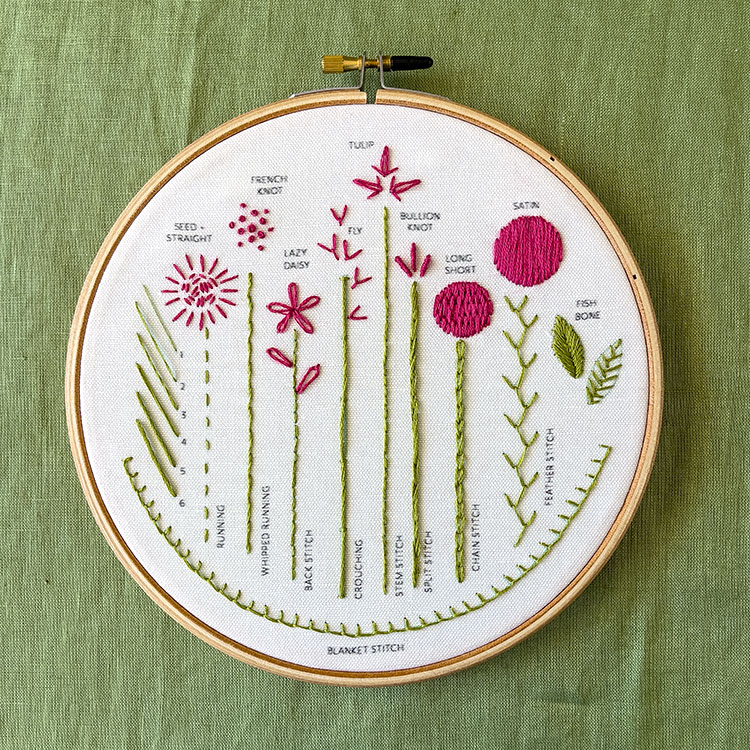
7. Split Stitch: The split stitch involves splitting each stitch in half with the needle to create a slightly textured line. Bring the needle up, make a stitch, and then bring it back up in the center of the previous stitch. This technique results in a braided or twisted appearance, ideal for outlines or lettering that needs a bit more texture. It’s a great alternative to backstitch when you want a bit of added depth to your embroidery.
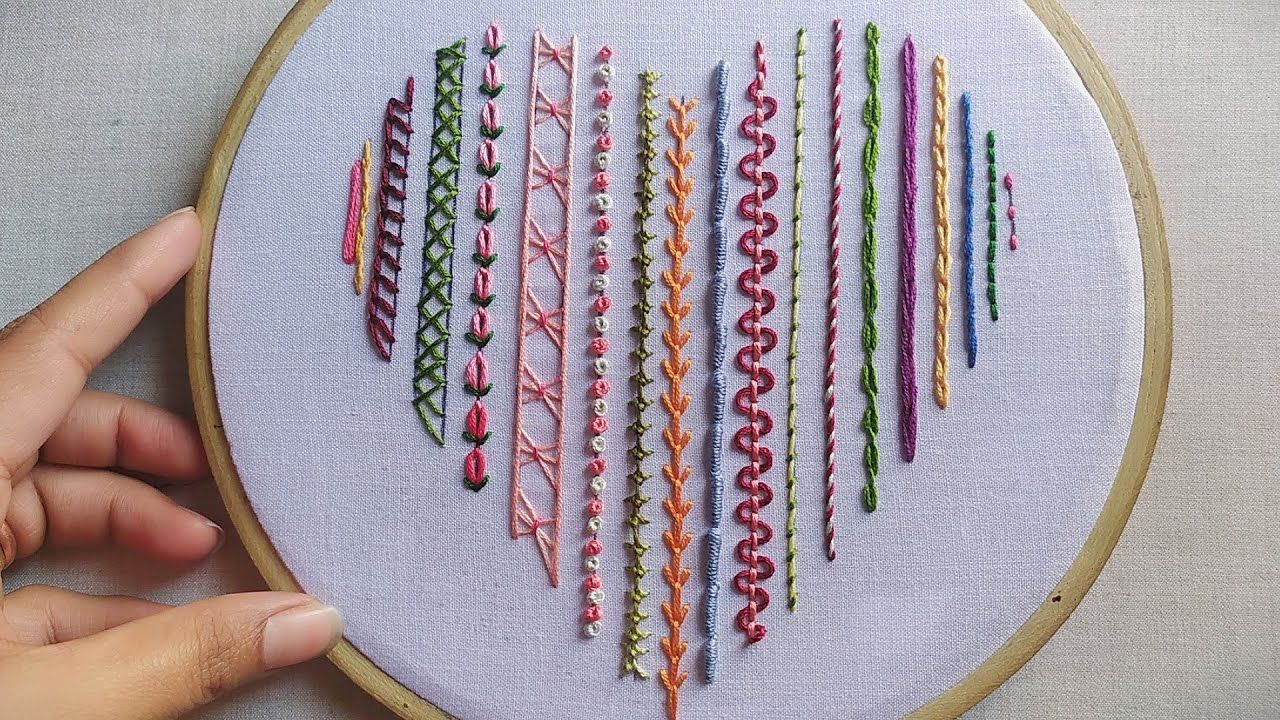
8. Stem Stitch: The stem stitch is a soft, twisted line that works especially well for curved lines and floral stems. To create it, bring the needle up, make a stitch forward, and come back up halfway between the previous and current stitch. This technique provides a flowing effect, making it ideal for natural motifs and adding an organic look to your embroidery. It’s perfect for stems, vines, and gentle curves, enhancing the overall flow of a design.
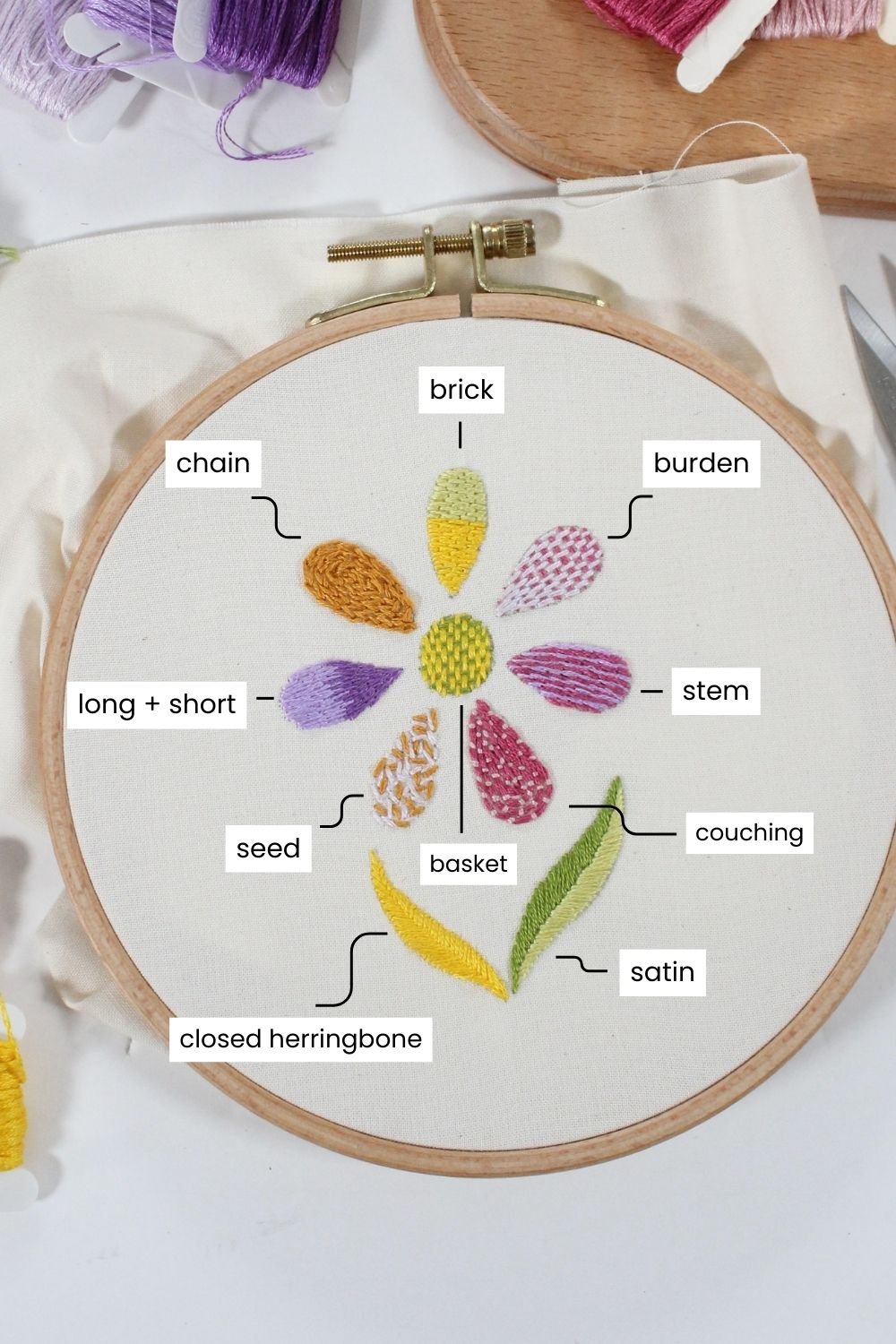
9. Long and Short Stitch: This stitch is a staple for shading and blending colors. To start, alternate between long and short stitches, layering them closely to create smooth transitions and gradients. This stitch is often used in needle painting, allowing for realistic representations of flowers, animals, or landscapes by blending colors in a lifelike way. It can transform a flat design into a vibrant, detailed piece that feels almost three-dimensional.
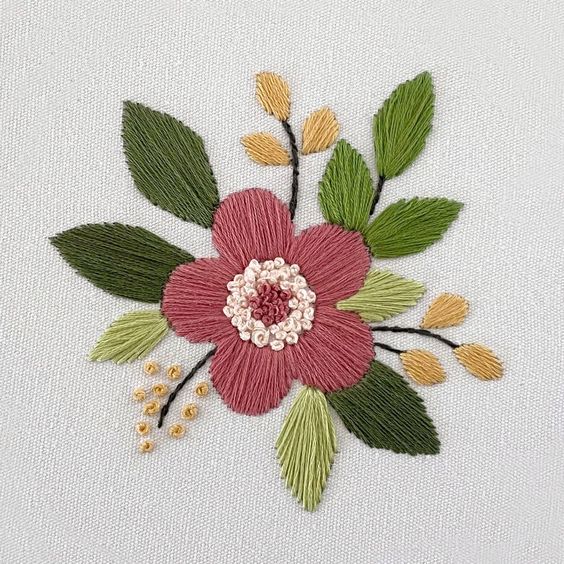
10. Feather Stitch: The feather stitch has an intricate, branching effect that resembles the feathers of a bird. To make this stitch, bring the needle up, make a small loop, and secure it with a stitch on each side to form a V-shape, repeating as needed. It’s ideal for borders, adding decorative touches, and creating organic-looking patterns. Feather stitches are highly adaptable and can be used in different sizes and arrangements to build unique designs.
